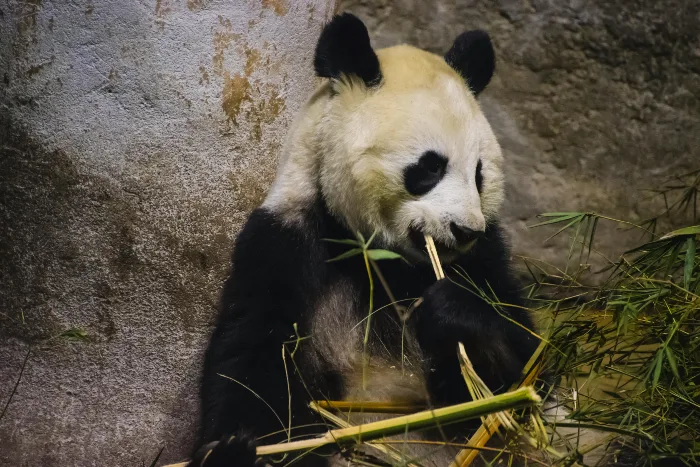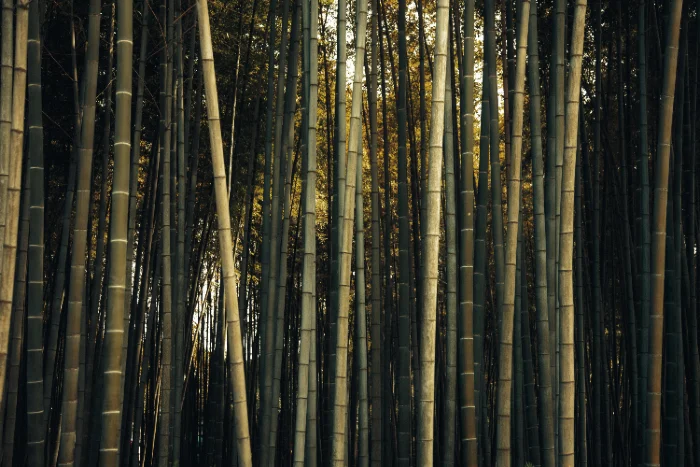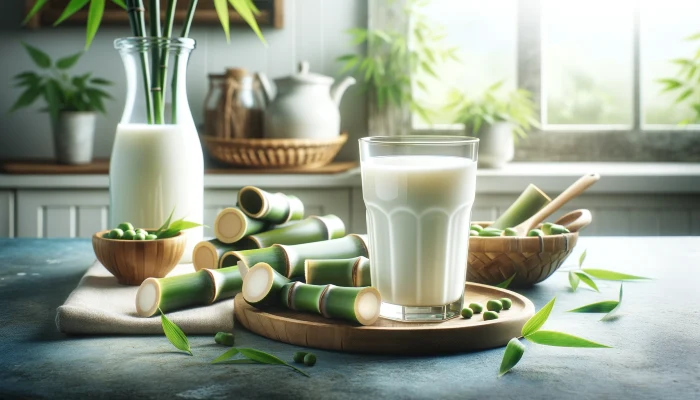Bamboo, the staple food for pandas, offers more than just a cute sight. A new Chinese study suggests this fast-growing plant could be a sustainable protein source with a surprisingly similar profile to cow’s milk. And that’s just the start of bamboo’s potential benefits!
Bamboo: Way More Than Panda Food
Forget what you thought you knew about bamboo. It turns out those tender bamboo shoots you find in stir-fry are packed with nutrients:
- Protein Power: Bamboo shoots can rival cow’s milk in protein content!
- Amino Acid Boost: They provide seven out of nine essential amino acids your body needs.
- Veggie Victory: Bamboo shoots contain more iron than spinach and even have more amino acids than carrots, celery, and cabbage.
- More Good Stuff: They’re also high in fiber, low in fat, and packed with vitamins.

Health Benefits Beyond the Basics
The study highlights more reasons to add bamboo to your diet:
- Obesity, Diabetes, and Cancer Fighter: Research suggests bamboo shoots may help prevent these serious health problems.
- Antioxidant Powerhouse: “Antioxidant activity is one of the most important functionalities of bamboo shoots,” the researchers explain. Bamboo fights the cell damage linked to aging.
- Antimicrobial Action: Bamboo shoots might even offer protection against infections!
From Delicacy to Superfood
“Bamboo shoots are rich in protein, dietary fiber, minerals, vitamins, and a variety of biologically active substances,” says Wu, one of the lead researchers. They’re not just delicious – bamboo shoots might just become a crucial health food.
Bamboo in Your Kitchen
These versatile shoots can be enjoyed in so many ways – pickled, fermented, dried, canned, frozen, as juice or powder, or even fresh like other veggies. And there’s more: bamboo can be turned into “functional foods”, boosting everyday snacks like yogurt with extra fiber.
Bamboo: A Plant with History and a Future
While pandas get most of the bamboo fame, this plant has long been a culinary and medicinal star in Asia. It’s even mentioned in an ancient Chinese dictionary from the 4th century BC! Today, demand for bamboo shoots is surging, with trade value rising 40% between 2007 and 2018.

Mountains of Wasted Potential: The Bamboo Oversupply Challenge
China’s bamboo abundance presents a surprising problem: millions of tons of edible bamboo shoots are simply left to rot on mountainsides each year.
As researcher Wu notes, “The rest are left rotting on the mountain…low prices leave little incentive for farmers to harvest the shoots.”
This wastefulness stems from a combination of factors:
- Low Prices: The current market undervalues bamboo shoots, making harvest unprofitable for farmers.
- Oversupply: Production outpaces demand, further driving down prices and discouraging harvesting.
The researchers estimate that a staggering 25 to 35 million tons of bamboo shoots are produced annually within China’s vast bamboo forests. However, a sobering one-third of this potential food source is left unharvested.
Despite having 6.4 million hectares of bamboo forest, China dedicates less than 6% of it to edible shoot production. This untapped potential translates into millions of tons of wasted bamboo each year.
This wasted resource represents a significant missed opportunity. Imagine the impact on global food security if China could efficiently utilize its existing bamboo production.
The good news? Researchers are optimistic. By addressing the economic barriers and exploring new uses for bamboo shoots (like turning leftover shells into functional food ingredients), we can unlock the full potential of this sustainable and nutritious plant.
In fact, researchers say that if more bamboo were harvested and global production increased, we could produce 150 million tons per year – a major step in feeding our growing population.

Challenges and Opportunities
Expanding bamboo production does have hurdles:
More To Discover
- Limited Edible Varieties: Not all the 1,640 bamboo species have tasty (or safe) shoots. Out of the vast 1,640 bamboo species found globally, only a fraction are suitable for human consumption. The study reveals that China, with its incredible bamboo diversity of 800 species, has just 153 edible varieties. Even among those, only 56 are considered “high quality” in terms of nutrition.
- Wasteful Processing: Much of the bamboo shoot is inedible, but scientists are finding uses for the leftovers too.
- Shelf Life and Safety: Bamboo shoots need rapid processing or can become tough. Researchers stress the need for safety standards. And too much processing can damage and lessen the nutritional value of the bamboo.
The Bottom Line
“Despite their potential, the utilization of bamboo shoots in the current food industry faces limitations,” the researchers admit. However, their study concludes that bamboo shoots are “an underestimated natural resource…[and] have great potential to become a mainstream food worldwide and contribute to United Nations Sustainable Development Goals.”



















